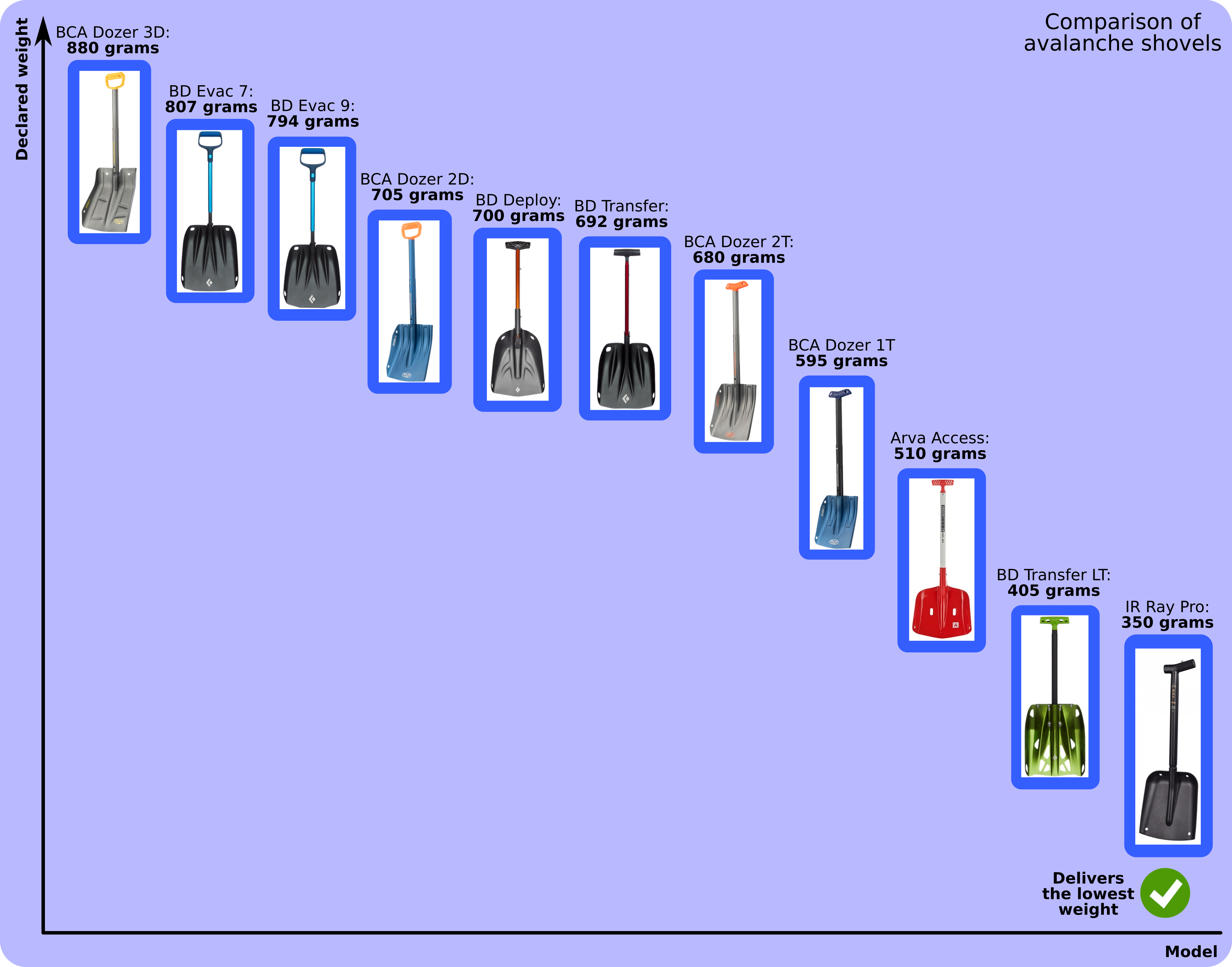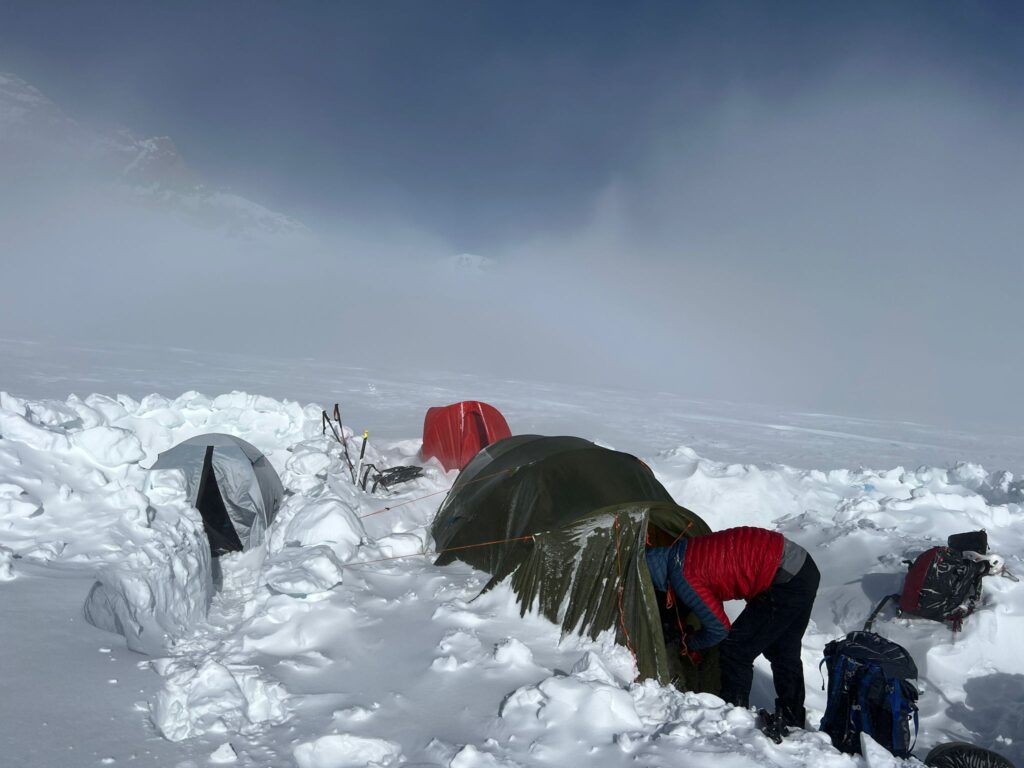Review and Analysis of the ICE ROCK Ray Pro avalanche shovel
Ray Pro from Ice Rock is an amazing expedition snow/avalanche shovel that beats all the competition with its ultimately low weight and simultaneously with its durability. In general, it does exactly what it is supposed to do, and it does it really well. What makes it outperform all the competing models is its unbelievably low weight of merely 350 grams.

I have used Ray both in my exploratory winter expeditions to the mountains of Siberia, and during climbing trainings in the Alps. It did perform amazing and I will continue taking Ray for all my future undertakings, for both short trips and very long projects.
Ray does great in all the tasks related to moving snow around. It does not only performs well at digging loose snow, but it also penetrates hard snow very effectively – which is useful when building camps in wind-swep ranges such as the Alps, where the snow tends to be very hard. While I did not use it as an anchor, I’d not hesitate to do so. Finally, it is very comfortable to carry, and the small holes at its head make it possible to not only use it as a snow anchor, but also to additionally secure it in case you’re facing some really rough gales.
Ray’s foremost distinctive feature is its low weight. At 350 grams, it is the lightest snow shovel in the world by a really large margin. At the same time, it’s quite robust. I have been using it for the last year and it doesn’t even have many scratches, despite taking quite a lot of abuse. And I did use it rough – imagine setting a camp in -50 C, one does not really think about treating your equipment gently, but to dig as fast as possible… This is possible thanks to the used materials, including its titanium front edge and composite hybrid micro-sandwich structure. The additional advantage of the carbon-fibre shaft is lowering the heat loss of the user’s hand. Finally, the RAY Ultralight meets requirements of ISMF (International Ski Mountaineering Federation) and different competitions (for example, La Patrouille des Glaciers (PDG) in Switzerland), which is definitely worth mentioning.
The fact that Ray is made from carbon means that it is well suited for very cold places, and does not radiate cold as badly as standard snovels.


Comparison to other shovels
Ray is much lighter than all other avalanche shovel models: see the plot below, which compares its weight to that of ten other popular shovels coming from the most competitive brands.

The scoop has a variable positioning on the shaft: the shovel can be transformed in a hoe for a quicker digging on a steep terrain. It makes it easier to build snow walls around tents, dig snow caves, or test snow surface.

What to improve?
Is there anything that could be done better? Yes, there is one things that I would love to see in the next Ray release – making it extensible. While not being critical, it would make the shovel a bit more comfortable to use in some settings.
Conclusion
To conclude, Ray is an amazing choice for a snow or an avalanche shovel – I look forward to using it during many future projects.
Photos





More information is available on the product website, you can get there using this link.